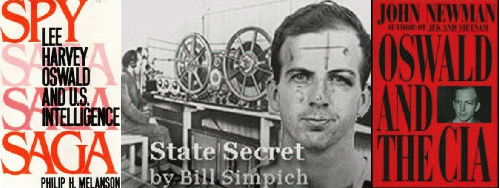(Article changed on March 9, 2014 at 09:16)
Although Professor John Mcadams wrote The JFK Assassination Logic (Potomac Books, 2011), the book is far away from its declared purpose of "how to think about claims of conspiracy." The underlying intention is to reject all claims of conspiracy and to confirm the Warren Commission (WC) Report on a lone gunman who shot a magic bullet. Thus, Professor Mcadams devised his logic on the basis of the classic Only Game in Town (OGT) fallacy.
Even if it weren't available a better account than the WC report, nobody is obliged to accept it in default, because there is always an alternative to the OGT fallacy: to find a more plausible explanation. All the JFK assassination researchers face the same logical problem of finding evidence that strongly discriminates between the two competing hypotheses:
H 1 : The deed of a lone gunman
H 2 : The result of a conspiracy
All of them are forced to infer to the best explanation through good arguments, id est: those containing true premisses related in the right way to the conclusion. For this kind of reasoning, the American philosopher Charles Sanders Pierce coined the term " abduction ," but it rather suggests kidnapping nowadays. We can use instead "inference to the best explanation" for what Pierce meant, and he actually meant that an observation O strongly favors one hypothesis (let's say H 2 ) over another ( H 1 ) if the following conditions are satisfied at once:
If H 2 were true, O is to be expected (unsurprising)
If H 1 were true, O would have been unexpected (surprising)
The No Surprise / Surprise Principle rules the inference to the best explanation and it applies not only to the whole set of facts regarding the JFK assassination, but also for every single fact in dispute.
Oswald's Impersonation in Mexico City
In the fourth part of the series, I trusted the old sleuth Alan H. Belmont in his report to FBI Associate Director Clyde A. Tolson: "The Agents who have talked to Oswald have listened to the tape provided by CIA of the call allegedly made by Oswald to the Soviet Embassy, and they do not think the individual is Oswald, as his voice is different, and he spoke in broken English" (Research Papers of John Armstrong, Book 1, Notebook 2 , pages 38-39).
Jane Davidson replied that Belmont misunderstood what Dallas FBI Special Agent in Charge Gordon Shanklin told him at 9:15 AM on November 23, 1963. If this hypothesis were true, it's surprising that, after calling Shanklin again at 11:50 am EST , Belmont kept on reporting to Tolson: "Inasmuch as the Dallas agents who listened to the tape of the conversation allegedly of Oswald from the Cuban Embassy to the Russian Embassy in Mexico and examined the photographs of the visitor to the Embassy in Mexico and were of the opinion that neither the tape or the photograph pertained to Oswald , I requested Shanklin to immediately send a photograph of Oswald to our Legal Attaché."
Davidson discovered that the very agent who had flown from Mexico City with CIA materials for the FBI in Dallas, Eldon Rudd, had memoed : "CIA has advised that these tapes have been erased and are not available for review." The HSCA concluded : "A review of relevant FBI cable traffic established that at 7:23 p.m. (CST) on November 23, 1963, Dallas Special Agent-in-Charge Shanklin advised Director Hoover that only a report of this conversation was available, not an actual tape recording" (Final Report, page 250). And Professor Mcadams flatly states: "No tapes from Mexico City were sent to Dallas. That's a factoid."
The well established fact is then that the tapes were erased. It's surprising, since the hypothesis of common sense indicates that the CIA must have preserved taped conversations involving an American citizen who had visited both the Cuban and the Soviet embassies in Mexico City.
(Note: You can view every article as one long page if you sign up as an Advocate Member, or higher).





